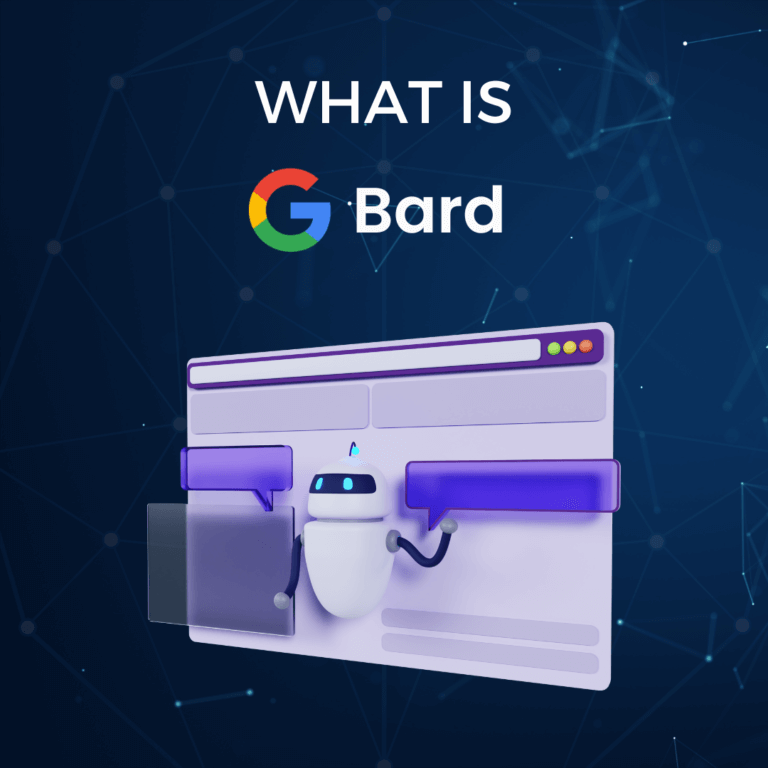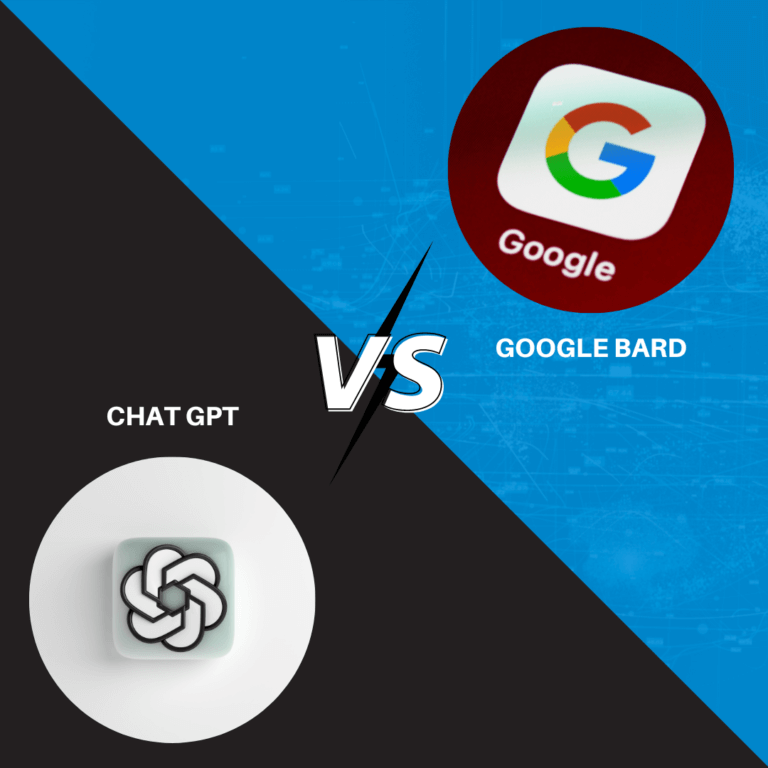Is Google Bard better than OpenAI's ChatGPT?
Google recently announced its AI Chatbot Bard, which will compete directly with Open AI’s ChatGPT. Bard, which has been in development for months, is finally being made available to trusted testers before it is made public. Both tools can be used to increase productivity and efficiency in the workplace. Depending on your specific needs, you may find one tool more beneficial than the other. Even though these AI chatbots aren’t yet perfect, they hint at an exciting future of AI applications. It will increase people’s access to information. Language-based models have changed the way humans’ function. AI-powered chatbots have become a popular way for businesses to communicate with customers. It appears that a battle of the AI chatbots is on the horizon.
What is Google Bard?

Bard is the latest experimental AI-powered chatbot, similar to OpenAI’s ChatGPT. It can respond to various queries and requests in a conversational manner. It is intended to generate new, high-quality responses by using information found online. While it is not yet widely available, Google Bard AI is likely to be integrated into Google Search and made accessible via its search bar. Google claims that Bard uses online information to provide fresh, high-quality responses. The Google’s LaMDA language model, which is based on the Transformer neural network architecture, is at the heart of Google’s chatbot.
Google has been coy about Bard’s capabilities so far, but it has provided some examples of what it can do. In a nutshell, Bard is a next-generation version of Google Search that has the potential to change the way we use search engines and search for information on the web.
Features of Google Bard AI
Although chatbots cannot hold conversations in the same way that humans can, they frequently appear to do so by generating a wide range of digital text that can be repurposed in nearly any context. Google’s chatbot aims to accomplish this with almost any topic:
- Seeking to demonstrate the combination of power, intelligence, and creativity
- Gathering data from user responses and the web
- Using a lite model version of the LaMDA for preliminary testing
- Gathering feedback to improve the AI system in the future
What are the Limitations of Google Bard?
Conversational AI and Chatbots have revolutionised the way computer software is built, used, and maintained. They plan to redesign search engines, digital assistants, and email programmes. Despite its immense potential, the technology is not without flaws.
Chatbots have a long way to go before they can distinguish between fact and fiction and avoid biassed responses because they learn from the vast amounts of information available on the internet.
The most recent instance of Google Bard’s blunder was captured in the form of a factual error in its very first demo. Google shared a GIF of one of Bard’s responses to a question that contained incorrect information. The GIF displayed the question,
“What new discoveries from the James Webb Space Telescope can I tell my 9-year-old about?”
…with the answer, that it captured the first images of a planet outside of our solar system. Many astronomers on Twitter, however, pointed out that this is incorrect, as the first image of an exoplanet was taken in 2004. This error highlights the most significant limitation of AI chatbots and the importance of a thorough testing process.
To keep up with the steep competition that ChatGPT has introduced to their relatively untouched ecosphere, Google is making an effort to improve Bard’s responses and meet a high bar for quality in real-world information.
Difference between Google Bard and ChatGPT

Both Google BARD (Brain-inspired ARchitecture for Deep Networks) and OpenAI’s GPT-3 (Generative Pretrained Transformer 3) are artificial intelligence (AI) systems, but they serve different purposes and have different design characteristics. GPT-3 is one of the most comprehensive language models available today, focusing on natural language processing tasks such as language generation, question answering, and text completion.
Both Google Bard and ChatGPT are language models that generate human-like text in response to an input prompt. There are, however, several distinctions between these two models.
Let’s look at the 5 main differences between Google Bard AI and ChatGPT:
- Bard will use currently available online material, such as statistics and sources. Bard will have access to the most recent date and will be able to provide more up-to-date information, whereas ChatGPT’s knowledge is limited to events occurring between now and 2021.
- Google Bard will have access to a wealth of data and will be integrated with Google’s search engine, giving it an advantage over Open AI’s ChatGPT.
- While ChatGPT can make some factual errors and embellish stories, Google’s Bard AI is thought to provide more reliable information to consumers.
- Because of Google’s massive data collection, Bard AI has a significant advantage over other AI platforms such as ChatGPT in terms of the breadth and scope of information it can access.
- Bard will be able to distil complex ideas into digestible, conversation-starting chunks. The goal is to disseminate information more broadly in an understandable manner that may inspire everyone, especially children, to learn. Chat GPT, on the other hand, generates content in response to a text prompt.
Are Google Bard and ChatGPT rivals?
Bard is viewed as a competitor to Microsoft-backed ChatGPT, which allows a computer to converse with a human. Google made the announcement shortly after Microsoft announced a $10 billion investment in OpenAI, the company behind ChatGPT. The PC manufacturer intends to incorporate ChatGPT into its own search engine Bing. So far, Google has not stated whether Bard will include chatbot-like features or go beyond providing a text summary of search results.
Overall, Google Bard and ChatGPT are both impressive natural language processing and machine learning language models. AI chatbots are an exciting new technology that has the potential to change the way we communicate and interact with technology. We can expect to see even more advanced and sophisticated chatbots as AI advances. They can provide users with much more personalised and intelligent assistance.
If you would like to go digital with your business, we can help you with:
• Web Application Development
• Progressive Web Application development
• Mobile Application Development
• Application Maintenance
• Technology and Database Migration services
• Software Consultation
